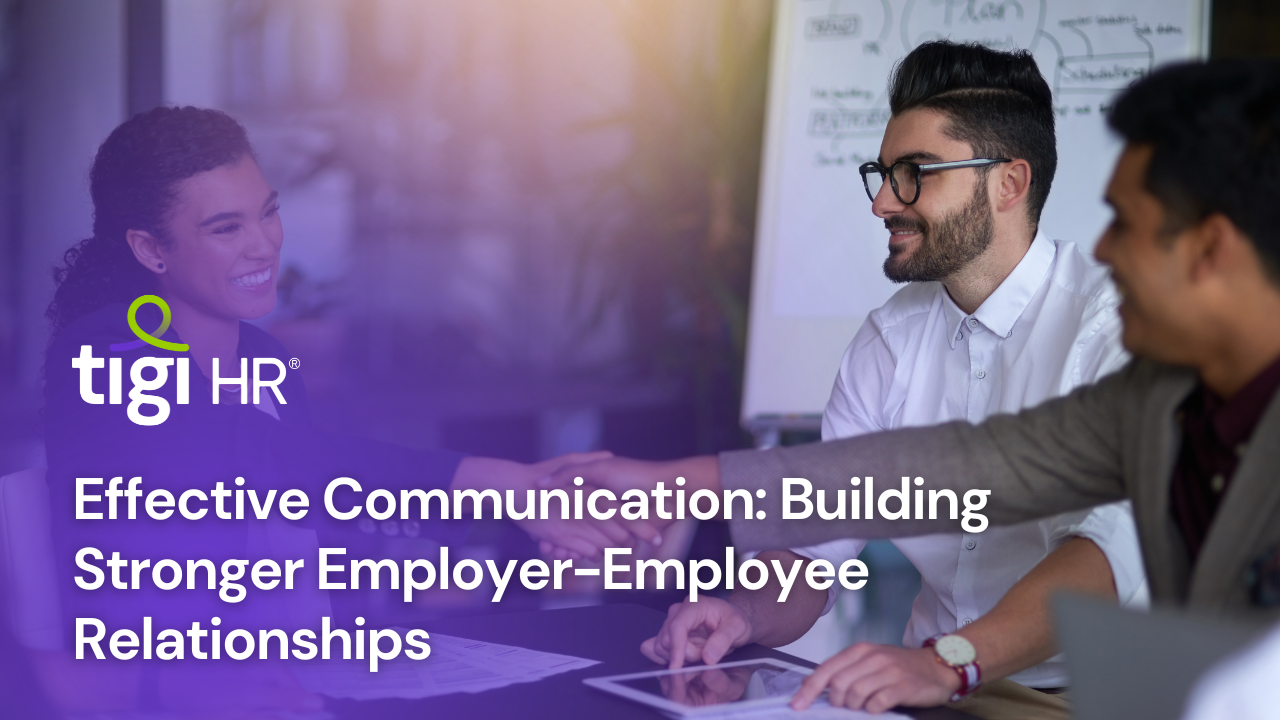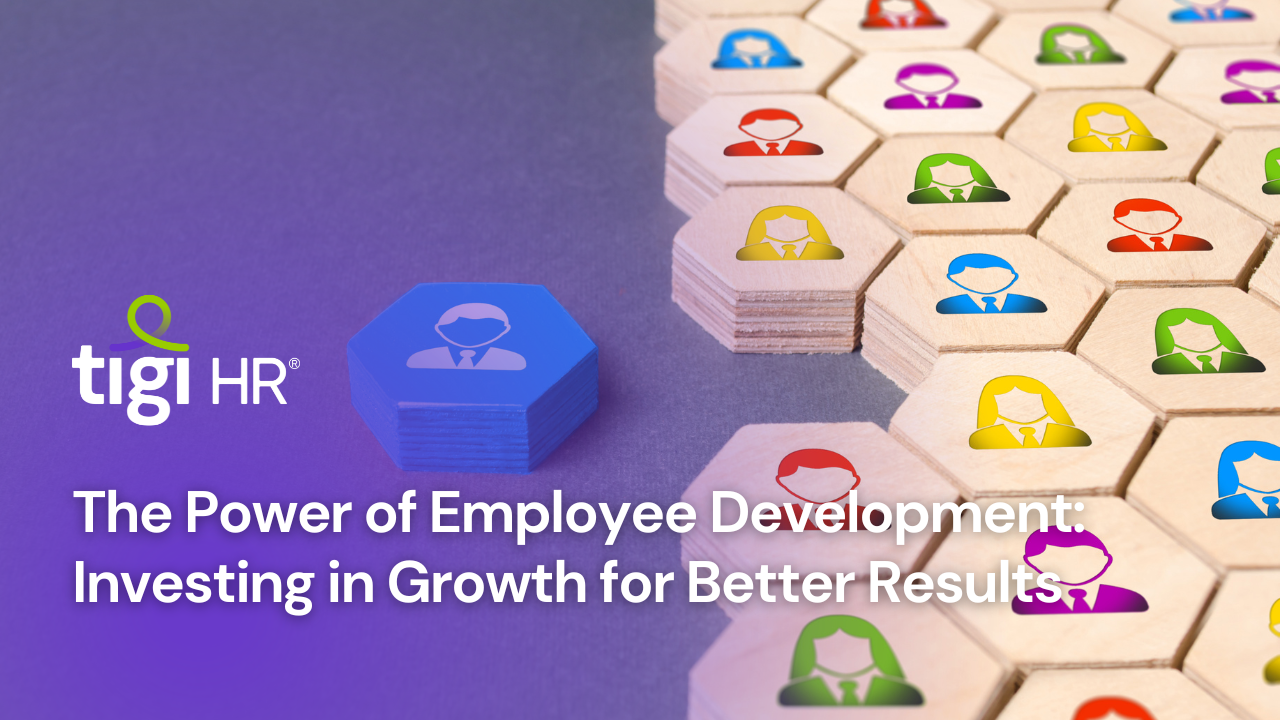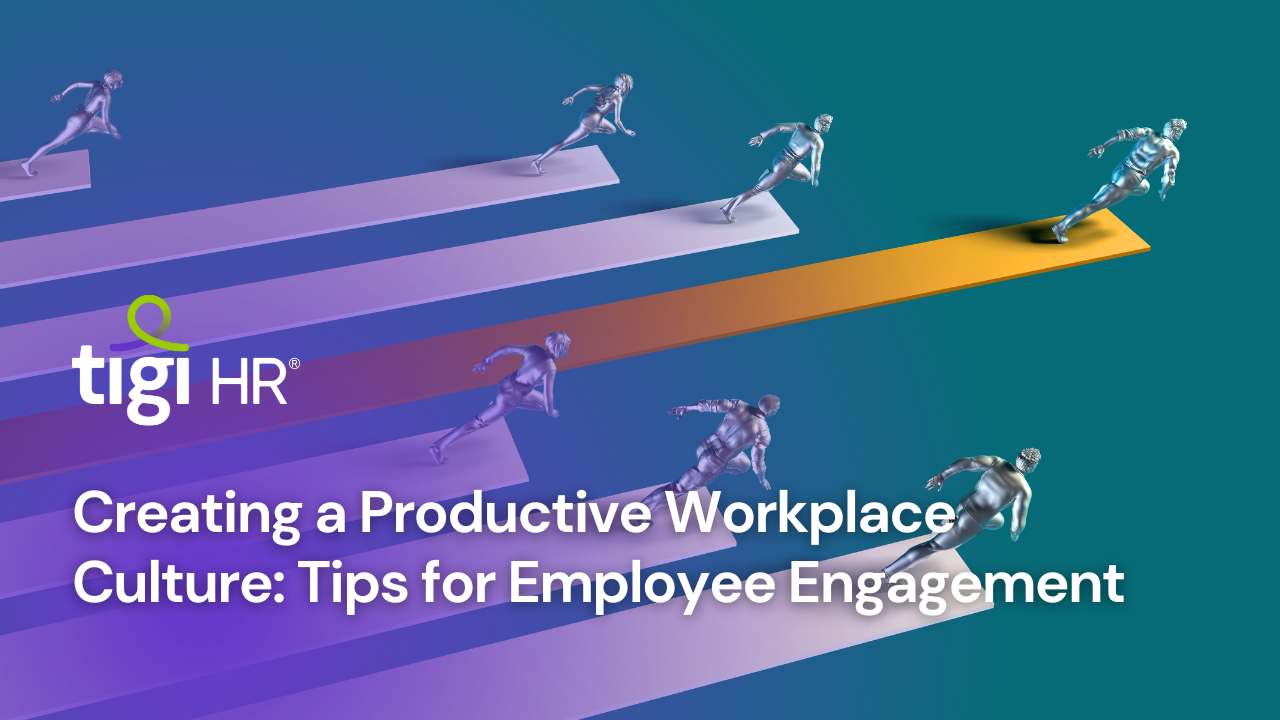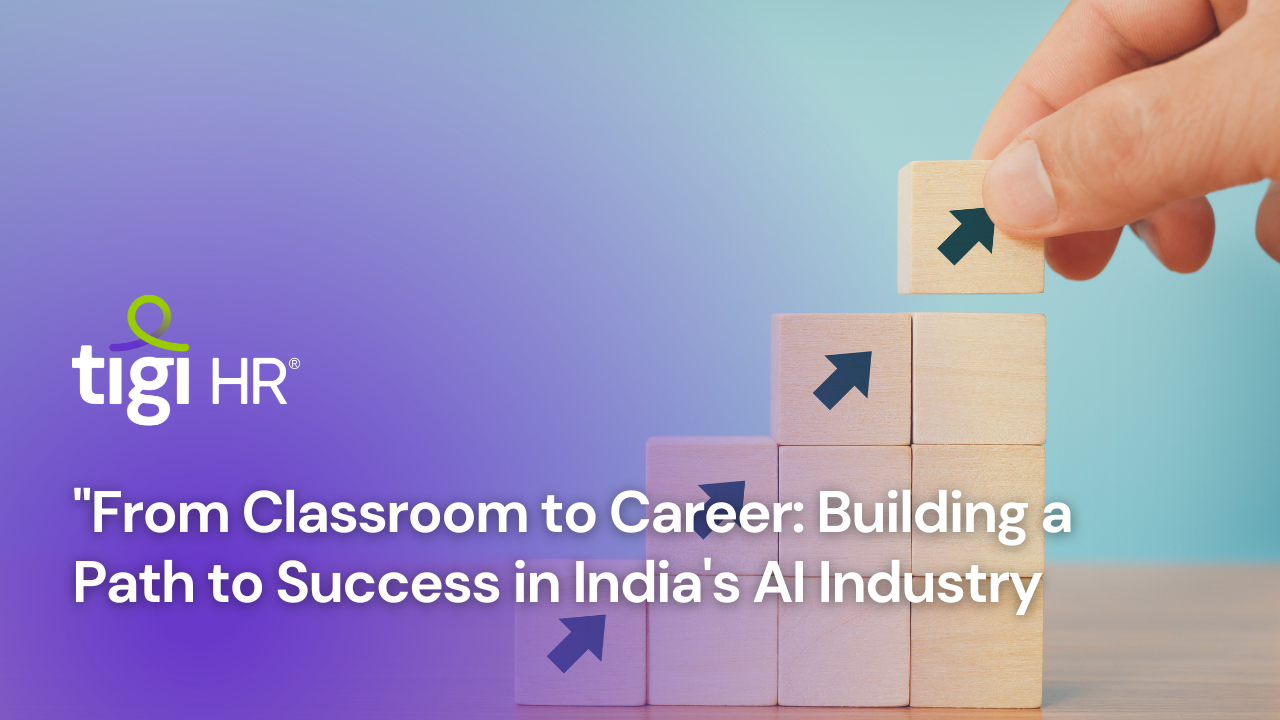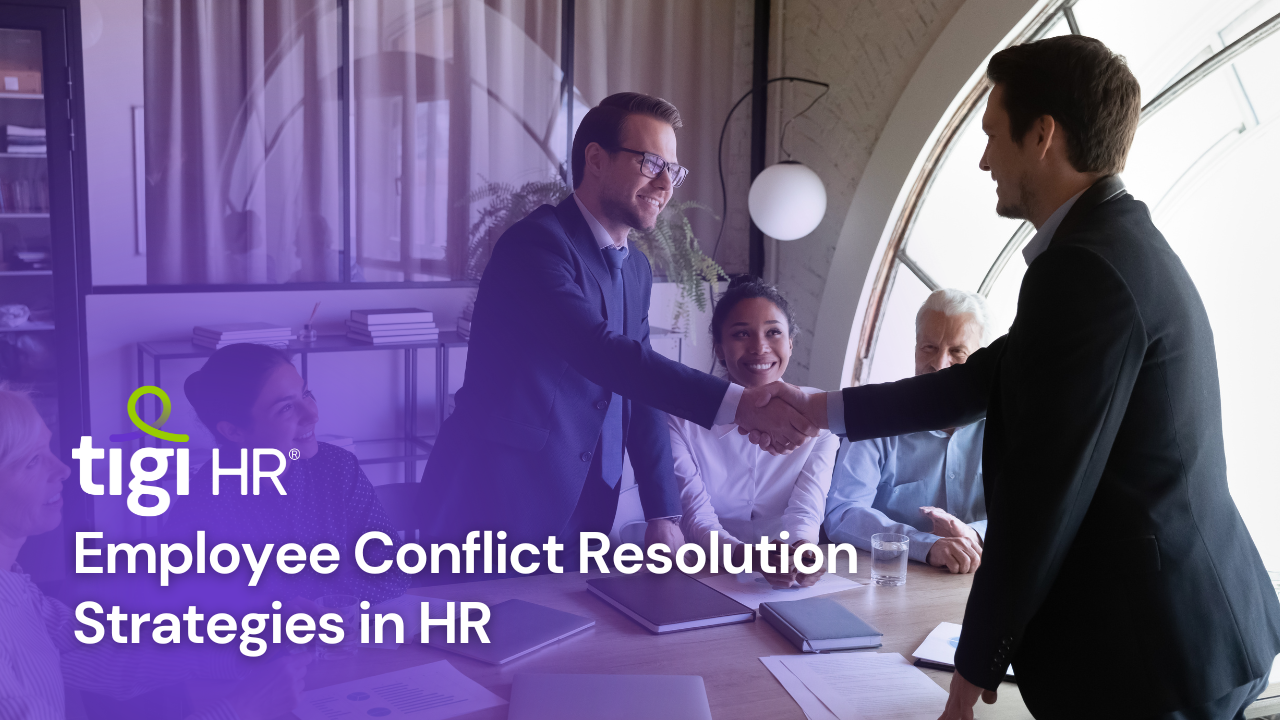Navigating the gig economy’s rise, HR teams must adopt effective strategies for freelancer management. Clear communication, robust onboarding, and performance metrics are key. Legal compliance and cultural integration also matter, while flexible compensation and security measures build trust. SEO-friendly and plagiarism-free, this article explores HR’s crucial role in embracing the gig economy.
Month: September 2023
The Future of HR: Trends and Predictions for the Next Decade
Explore the dynamic future of HR in our latest article. Discover the top trends reshaping the workplace, from AI-driven recruitment to remote work strategies. Learn how HR professionals are prioritizing employee well-being and diversity, while harnessing technology to enhance decision-making. Stay ahead in the world of HR with insights into what the next decade holds for the industry.
Effective Communication: Building Stronger Employer-Employee Relationships
In the intricate web of the modern workplace, one element stands as the linchpin of success: effective communication. It’s not a mere tool for exchanging information; it’s the catalyst for forging robust employer-employee relationships. These relationships, in turn, form the foundation upon which thriving organizational cultures are built. In this excerpt, we embark on a journey to understand the profound significance of effective communication in the workplace, supported by compelling statistics and insightful observations. Moreover, we explore practical strategies that organizations can implement to elevate their communication game.
Effective communication is more than the sum of its parts; it’s the lifeblood of trust, engagement, and shared vision within an organization. Its significance is multifaceted:
Enhancing Productivity**: Clarity and precision in communication are antidotes to productivity bottlenecks. Employees who clearly understand their tasks and responsibilities perform more efficiently.
– **Conflict Resolution**: Effective communication is the compass that guides organizations through the treacherous waters of conflict. Open dialogues facilitate constructive solutions.
– **Organizational Alignment**: Communication aligns employees with an organization’s mission, values, and objectives, creating a unified front in the pursuit of common goals.
The numbers speak volumes about the impact of effective communication:
– A mere 13% of employees, according to a Gallup poll, are engaged at work. Effective communication is a linchpin for engagement.
– Recognition and appreciation from managers are pivotal for engagement and job performance, as affirmed by 98% of employees in an Achievers survey.
– Companies that communicate effectively are over twice as likely to outperform their peers, according to research.
– Ineffective communication and lack of collaboration are cited by 86% of employees and executives as causes of workplace failures, as reported by Salesforce Research.
With the importance of effective communication firmly established, let’s explore practical strategies to nurture it within the workplace:
– **Clear and Transparent Communication**: Transparency is the cornerstone. Employers should openly share information about company goals, performance, and challenges. Employees should feel encouraged to voice their thoughts and concerns.
– **Actively Listen**: Listening is integral. Employers should actively listen to employees’ feedback, concerns, and ideas. Likewise, employees should practice active listening when receiving instructions or feedback.
– **Two-Way Feedback Mechanisms**: Implement regular feedback mechanisms, including one-on-one meetings, surveys, and suggestion boxes. These mechanisms allow for continuous improvement and provide employees with opportunities to voice their opinions.
– **Personalize Communication**: Recognize that employees have different communication preferences. Tailor your communication to meet individual needs and preferences.
– **Training in Effective Communication**: Offer training in effective communication skills to both employees and managers. These skills include active listening, conflict resolution, and empathy.
– **Recognition and Appreciation**: Recognize and appreciate employees for their contributions and achievements. Acknowledgment can be in the form of verbal praise, written commendations, or awards.
– **Consistency in Communication**: Maintain consistency, especially during times of change or crisis. Uncertainty can lead to anxiety, so keeping employees informed and updated is essential.
– **Empower Employees**: Empower employees to make decisions and take ownership of their work. Trust and empowerment encourage open communication and contribute to the organization’s success.
– **Celebrate Achievements Together**: Milestones and achievements should be celebrated collectively. Recognizing accomplishments strengthens team cohesion.
– **Lead by Example**: Leaders should lead by example when it comes to communication. Demonstrating effective communication practices sets the tone for the entire organization.
Effective communication is not a mere business strategy; it’s a cultural shift that nurtures an environment where ideas flow freely, feedback is embraced constructively, and relationships are fortified collaboratively. It’s the key to building a workplace where everyone is heard, valued, and motivated to contribute their best. As the statistics and insights underscore, organizations that prioritize effective communication are better equipped to attract, retain, and empower top talent.
The Power of Employee Development: Investing in Growth for Better Results
In the dynamic realm of modern business, the pursuit of sustainable growth and success is an ongoing challenge. Yet, the secret to achieving these goals often lies within an organization’s most valuable asset—its employees. Employee development, when approached strategically and effectively, can be a game-changer, not just for individual careers but for the entire organization. In this excerpt, we unveil the profound impact of employee development, backed by compelling statistics that underscore its significance.
Employee development encompasses deliberate efforts to nurture skills, knowledge, and capabilities within the workforce. It goes beyond traditional training, embracing a holistic approach that fosters talent, fuels growth, and kindles employee engagement. The reasons for investing in employee development are compelling: it enhances performance, retains top talent, drives innovation, and ensures continuity through succession planning.
To highlight the importance of employee development, consider these staggering statistics:
– A staggering 94% of employees, as revealed by a LinkedIn survey, are inclined to stay longer with a company that invests in their learning and development.
– Companies offering comprehensive training programs outperform their counterparts, boasting 218% higher income per employee, according to the Association for Talent Development (ATD).
– Organizations that invest more in employee training and development spend 218% more per employee, as reported by the Harvard Business Review.
– For millennials, development opportunities are paramount, with 87% considering them vital in their job, as per Gallup.
With the significance of employee development firmly established, let’s explore practical strategies to make it a reality:
– **Individual Development Plans (IDPs)**: Encourage employees to create IDPs that align with their career aspirations and organizational objectives, allowing them to take ownership of their growth.
– **On-the-Job Training**: Real-world work experiences, such as challenging projects, job rotations, and cross-functional assignments, provide invaluable opportunities for learning and skill acquisition.
– **Mentoring and Coaching**: Establish mentoring and coaching programs to pair experienced employees with those eager to learn and grow, offering guidance and insights.
– **Formal Training and Workshops**: Offer targeted training sessions and workshops that address specific skills and competencies, enhancing both technical and soft skills.
– **Online Learning and E-Learning Platforms**: Leverage digital platforms to provide flexible and accessible development opportunities, catering to the needs of remote or distributed teams.
– **Cross-Functional Collaboration**: Encourage employees to collaborate across teams and departments to broaden their horizons, fostering adaptability and innovation.
– **Continuous Feedback and Assessment**: Implement regular feedback mechanisms to monitor progress and adjust development plans, enhancing performance and engagement.
– **Employee Resource Groups (ERGs)**: Support ERGs focused on various aspects of development, creating spaces for growth, innovation, and diversity.
– **Recognition and Rewards**: Acknowledge and reward employees who actively engage in development programs, reinforcing the organization’s commitment to growth.
– **Data-Driven Decision-Making**: Harness data and analytics to assess program impact, allowing for informed adjustments to maximize returns.
Investing in employee development is not just a strategic choice; it’s a pledge to a brighter, more prosperous future. As the statistics and insights illustrate, organizations that prioritize development tend to excel in retaining talent, fostering innovation, and outperforming their peers. In today’s fiercely competitive business landscape, those who empower their employees to learn, evolve, and adapt are better equipped for lasting success. Employee development isn’t merely an expenditure; it’s an investment in the collective future of the organization and its workforce. It’s the catalyst for achieving better results, stimulating innovation, and flourishing in an ever-evolving world.
Creating a Productive Workplace Culture: Tips for Employee Engagement
In the ever-evolving landscape of today’s workforce, one term has become a cornerstone of organizational success: employee engagement. It’s not just a buzzword; it’s a critical factor that can make or break a company’s performance and longevity. Engaged employees are the heart and soul of a productive workplace culture, and their impact extends far beyond their individual tasks.
This excerpt dives into the significance of employee engagement, offering compelling statistics that highlight its transformative power. From improved productivity to enhanced innovation and retention, the benefits of an engaged workforce are far-reaching.
But how can organizations foster and maintain high levels of employee engagement? We present a set of actionable strategies that can transform workplace culture. From open and transparent communication to providing opportunities for growth and development, recognizing achievements, and promoting work-life balance, these strategies empower organizations to unlock the full potential of their employees.
Leaders play a pivotal role in creating an engaging workplace, and we emphasize the importance of leading by example. Inclusivity and diversity are also highlighted as key drivers of engagement, as they fuel creativity and innovation. Providing flexibility in work arrangements and regularly assessing engagement levels round out the toolkit for creating a vibrant and engaged workforce.
This excerpt sets the stage for a deeper exploration of how employee engagement can revolutionize workplace culture and lead to tangible benefits for organizations. As the statistics and insights reveal, it’s not just about creating a happy workplace; it’s about crafting an environment where employees are motivated, inspired, and committed to achieving their best, ultimately propelling the organization to greater heights of success.
Unlocking Employee Potential: Strategies for Maximizing Performance
In the dynamic world of business, success is often measured by the ability to harness the full potential of an organization’s most valuable asset: its employees. Unlocking employee potential isn’t just a strategic move; it’s a fundamental necessity for staying competitive and thriving in today’s fast-paced landscape.
Understanding what employee potential truly means is the first step. It’s about recognizing the untapped skills, knowledge, talents, and creativity that each employee brings to the table. In this excerpt, we explore why unlocking this potential is vital and delve into some key strategies to make it a reality.
Unlocking employee potential isn’t just a feel-good concept; it’s a powerhouse of benefits. It drives productivity, fosters innovation, boosts engagement, and retains top talent. The advantages are far-reaching, from increased output to a stronger competitive edge in the market.
So, how do organizations go about unlocking this potential? The strategies are diverse, ranging from investment in development programs and offering clear career paths to recognizing and rewarding achievements. A culture of continuous learning, mentorship, and employee empowerment also play pivotal roles. Diversity and inclusion, providing the right tools and technology, and encouraging work-life balance are equally vital elements of the equation.
In today’s rapidly changing business environment, organizations that prioritize the unlocking of employee potential are the ones that not only survive but thrive. They create a culture of growth, innovation, and resilience. Discover the full article to gain deeper insights into these strategies and understand why unlocking employee potential is both a strategic imperative and a moral responsibility.
From Classroom to Career: Building a Path to Success in India’s AI Industry
In the fast-evolving landscape of India’s Artificial Intelligence (AI) industry, the journey from the classroom to a thriving career is filled with promise and opportunity. India has emerged as a global hub for AI innovation and services, propelled by a young, tech-savvy population and a dynamic ecosystem of startups and tech giants. As the demand for AI professionals continues to soar, it’s crucial to understand how to forge a path to success in this exciting and rapidly expanding field.
**Educational Pathways**
The foundation for a successful career in AI often begins with education. Undergraduate degrees in computer science, mathematics, or related fields provide the essential building blocks. However, the learning journey doesn’t stop there. Online courses and Massive Open Online Courses (MOOCs) offer accessible avenues to acquire AI skills. Additionally, master’s and PhD programs provide advanced knowledge and research opportunities for those seeking to delve deeper into the field.
**In-Demand Skills**
To stand out in the competitive AI job market, individuals must cultivate specific skills. Machine learning, deep learning, natural language processing, and data science are just a few of the essential competencies sought after by employers. Proficiency in programming languages like Python and familiarity with AI frameworks such as TensorFlow and PyTorch are also invaluable assets. Moreover, an understanding of AI ethics and responsible development practices is increasingly vital.
**Thriving Job Market**
The AI industry in India offers a wide array of career opportunities. Data scientists, machine learning engineers, AI research scientists, and NLP engineers are among the roles in high demand. As the field continues to evolve, positions in AI ethics consulting, AI product management, and AI consulting are also emerging. Competitive salaries and exceptional growth prospects make these roles even more appealing.
**Networking and Community Engagement**
Building a successful AI career is not just about skills and knowledge; it’s also about connections. Engaging with AI-focused communities, attending conferences, and participating in industry events provide opportunities to network with like-minded individuals and stay updated on the latest developments. India hosts a vibrant AI community with numerous events and conferences dedicated to the field.
**Challenges and Future Outlook**
While India’s AI industry presents a world of opportunities, it’s essential to navigate challenges like the skill gap, ethical considerations, and the need for continuous learning. However, the future of AI in India is incredibly promising, with the industry poised to revolutionize sectors such as healthcare, agriculture, and finance.
Embarking on a career in India’s AI industry is not merely a job choice; it’s a journey into a world of innovation and transformation. As AI reshapes industries and impacts society, those with the passion and commitment to excel in this field will find themselves at the forefront of a revolution that promises to redefine the future. Whether you’re a student considering your educational path or a professional looking to pivot into AI, India’s AI industry offers boundless opportunities for growth, impact, and success.
Employee Conflict Resolution Strategies in HR
Explore essential strategies for managing employee conflicts effectively in the workplace. Learn how HR professionals can foster open communication, provide conflict resolution training, and implement clear policies and procedures to maintain a harmonious environment. Discover the importance of empathy and active listening in de-escalating tensions and promoting collaboration. Dive into alternative dispute resolution methods and the significance of regular follow-up for successful conflict resolution. Elevate your HR skills to create a more productive and satisfied workforce.
HR Technology Trends in Talent Acquisition
Explore the dynamic world of HR Technology Trends in Talent Acquisition. Discover how AI and automation are revolutionizing candidate selection, while data analytics drives informed decisions. Learn how to enhance the candidate experience and leverage video interviews and assessments. Stay ahead with predictive analytics for retention. Plus, don’t forget to implement SEO-friendly practices to boost your online presence in the competitive HR tech landscape.
Association of HR Directors in Nonprofit Organizations
Nonprofit HR Directors play a vital role in addressing unique challenges like limited resources and volunteer management. The Association of HR Directors in Nonprofit Organizations offers support, resources, and networking opportunities, fostering collaboration and knowledge exchange. To enhance their online presence, nonprofit HR leaders should focus on SEO practices, including keyword research, quality content, link building, mobile optimization, and local SEO.




